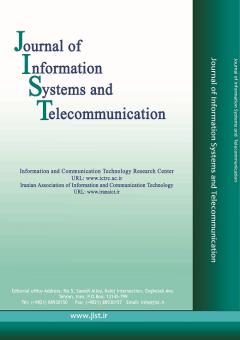Recognition of Attention Deficit/Hyperactivity Disorder (ADHD) Based on Electroencephalographic Signals Using Convolutional Neural Networks (CNNs)
Subject Areas : IT Strategy
Sara Motamed
1
![]() ,
Elham Askari
2
,
Elham Askari
2
![]()
1 - Assistant Professor, Department of Computer, Fouman & Shaft Unit, Islamic Azad University, Fuman, Iran
2 - Fouman & Shaft Unit, Islamic Azad University, Fuman, Iran
Keywords: Hyperactivity, Electroencephalographic Signals, Convolutional Neural Networks (CNN), Principal Component Analysis (PCA).,
Abstract :
Impulsive / hyperactive disorder is a neuro-developmental disorder that usually occurs in childhood, and in most cases parents find that the child is more active than usual and have problems such as lack of attention and concentration control. Because this problem might interfere with your own learning, work, and communication with others, it could be controlled by early diagnosis and treatment. Because the automatic recognition and classification of electroencephalography (EEG) signals is challenging due to the large variation in time features and signal frequency, the present study attempts to provide an efficient method for diagnosing hyperactive patients. The proposed method is that first, the recorded brain signals of hyperactive subjects are read from the input and in order to the signals to be converted from time range to frequency range, Fast Fourier Transform (FFT) is used. Also, to select an effective feature to check hyperactive subjects from healthy ones, the peak frequency (PF) is applied. Then, to select the features, principal component analysis and without principal component analysis will be used. In the final step, convolutional neural networks (CNNs) will be utilized to calculate the recognition rate of individuals with hyperactivity. For model efficiency, this model is compared to the models of K- nearest neighbors (KNN), and multilayer perceptron (MLP). The results show that the best method is to use feature selection by principal component analysis and classification of CNNs and the recognition rate of individuals with ADHD from healthy ones is equal to 91%.
[1] A. Shirazi, J. Alaghbandrad, “Treatment of Attention Deficit Hyperactivity Disorder (ADHD) With a Cognitive Behavioral Approach”, Journal of Advances in Cognitive Science. Vol. 2, 1379, pp. 29- 34.
[2] C. H. Chen, J. D. Lee, M. C. Lin, “Classification of Underwater Signals Using Neural Networks”, Journal of Science and Engineering. Vol. 3, 2000, pp. 31-48.
[3] B. P. Howell, S. Wood, S. Koksal, “Passive Sonar Recognition and Analysis Using Hybrid Neural Networks”, IEEE Proceedings Oceans. Vol. 4, 2003, pp. 1917- 1924.
[4] H. H. Jasper, P. Solomon, C. Bradley, “Electroencephalographic Analyses of Behavior Problem Children”, Am. J. Psychiatry. Vol. 95, 1938, pp. 641–658.
[5] A. Lenartowicz, S. K. Loo, “Use of EEG to Diagnose ADHD”, Curr. Psychiatry Rep. Vol. 16, 2014.
[6] M. Fabiani, G. Gratton, K. D. Federmeier, “Event-Related Brain Potentials: Methods, Theory, and Applications, in Handbook of Psychophysiology”, 3rd Edn (New York, NY: Cambridge University Press), 2007, pp. 85–119.
[7] B. Kim, J. Roh, S. Dong, S. Lee, “Hierarchical Committee of Deep Convolutional Neural Networks for Robust Facial Expression Recognition”, Journal on Multimodal User Interfaces. 2016, pp. 1–17.
[8] G. F. Woodman, “A Brief Introduction to the Use of Event-Related Potentials in Studies of Perception and Attention”, Psychophysics, 2010, Vol. 72, pp. 2031–2046.
[9] E. Kroupi, S. Frisch, A. Castellano, M. David, I. S. Montplaisir, J. Gagnon, “Deep Networks Using Auto-Encoders for PD prodromal analysis”, In Proceedings of the HBP Student Conference on Transdisciplinary Research Linking Neuroscience, Brain Medicine and Computer Science, Vienna, 2017.
[10] T. H. Grandy, M. Werkle-Bergner, C. Chicherio, F. Schmiedek, M. Lövdén, U. Lindenberger. “Peak Individual Alpha Frequency Qualifies as a Stable Neurophysiological Trait Marker in Healthy Younger and Older Adults”, Psychophysiology, 2013, pp. 570–582.
[11] https://school.brainhackmtl.org/project/adhdsubtype-project.
[12] S. Haykin, “Neural Networks, a Comprehensive Foundation”, Prentice Hall, Vol. 4n No. 2, 1999, pp. 191-192.
[13] H. Abdi, L. J. Williams, “Principal Component Analysis”, Wiley Interdisciplinary Reviews: Computational Statistics, Vol. 2, 2010, pp. 433-459.
[14] K. Boyd, K. H. Eng, “Area Under the Precision-recall Curve: Point Estimates and Confidence Intervals”, Springer Berlin Heidelberg, Berlin, Heidelberg, 2013, pp. 451–466.
[15] J. Davis, M. Goadrich, “The Relationship between Precision-Recall and ROC Curves”, Proceedings of the 23rd International Conference on Machine Learning, 2006, pp. 233–240.
[16] F. Li, X. Li, F. Wang, D. Zhang, Y. Li, F. He, “A Novel P300 Classification of Algorithm based on a Principal Component Analysis-Convolutional Neural Network”, Applied Science, 2019, pp. 2-15.
[17] M. Robertson, S. Furlong, B. Voytek, C. Boettiger, M. Sheridan, “EEG Power Spectral Slope Differs by ADHD Status and Stimulant Medication Exposure in Early Childhood”, Journal of Neurophysiology, 2019, pp. 2427-2437.
[18] M. R. Mohammadi, A. Khaleghi, A. M. Nasrabadi, “EEG Classification of ADHD and Normal Children using Non-Linear Features and Neural Network”, The Korean Society of Medical & Biological Engineering and Springer, Vol. 6, 2016, pp. 66-73.


